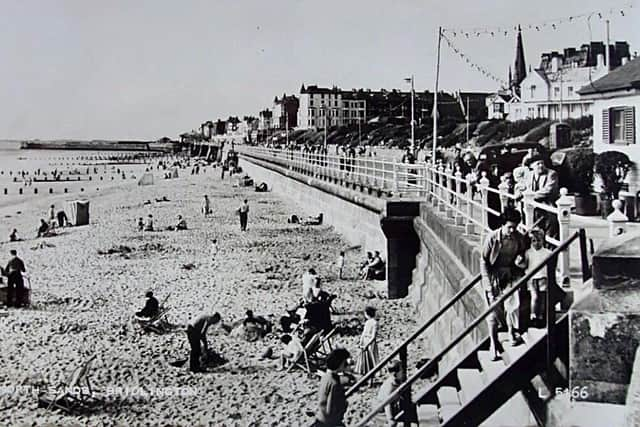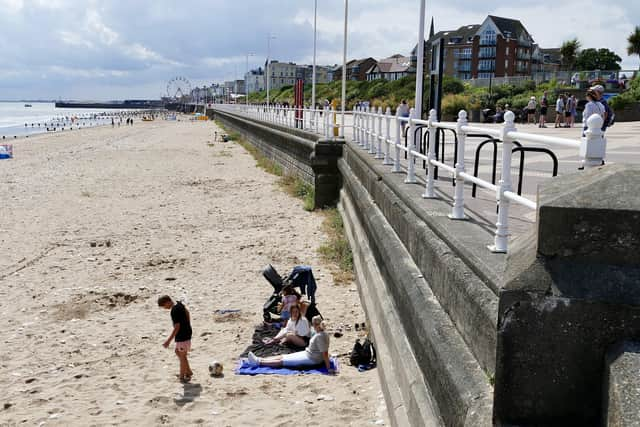The Now and Then column with Aled Jones: The changes along Bridlington’s north beach area


His classic postcard and modern-day photo showcases the changes at the area which is still popular with visitors today.
Mr Jones said: “This week’s vintage postcard is a great piece of nostalgia and a genuine photographic image taken by Valentine & Sons, the famous publisher based in Dundee and London. It offers a fine snapshot into how the north seafront area looked in the late 1950s.
Advertisement
Hide AdAdvertisement
Hide Ad“It was taken from the top of the Sands Lane slipway and shows how the Bridlington skyline has changed over the last 60+ years. Distant are the days when the renowned Alexandra Hotel stood proudly over the North Bay; if you look in the top right corner you can just see its elegant rooftop windows.


“The hotel’s demolition in 1976 changed the fabric of the seafront forever. It also made it a lot uglier. For here was one of the most stunningly beautiful buildings the town of Bridlington will ever see. A fairy-tale building that made dreams come alive for the thousands of people who stayed there during its long 109 year history. A building that could and should have been preserved for posterity and converted into sea view apartments.
“The most obvious change, when looking at the modern comparison picture, is the removal of the set of wooden stairs down to the beach. What also stands out is the disappearance of the building to the immediate right.
“I have not been able to research what it was used for but it appears to have been a café or ice cream kiosk. Note the tiled roof, shuttered window and potted shrubs outside. Perhaps it was demolished because it interfered with the safety of the land trains?
Advertisement
Hide AdAdvertisement
Hide Ad“In the fifties and sixties, parking was legally allowed on the north seafront, as evidenced by the classic cars parked up outside the café. Don’t miss the traditional red telephone box stood behind, also long gone.
“The splendid white mansion overlooking the Bay to the right of the postcard, could have come straight out of the pages of a period novel. It brings to mind Jay Gatsby’s mansion on Long Island Sound in New York, so famously depicted in Scott Fitzgerald’s novel.
“A bold display of wealth and success, it was known as Dane’s Lea and was the finest house on the Quay. Built by Captain E. Barnes, the founder of St. Anne’s Convalescent Home and Orphanage, it would today be a historic listed building. As you can tell from the replication, the mansion has long since gone but the huge lawned garden remains intact today, albeit in the form of a crazy golf course!
“When the postcard was taken c.1959 Danes Lea was no longer lived in as a private home but had in fact been modified for use as a convalescent home.
Advertisement
Hide AdAdvertisement
Hide Ad“The final point of interest in the postcard is the imposing spire of Holy Trinity Church which in those days was the opposite neighbour of the Alexandra Hotel. It was consecrated in 1871, the year of the Great Gale, and built at a cost of just £6,500. By the end of Queen Victoria’s reign, the average size of the congregation in the summer was about 1,000.”